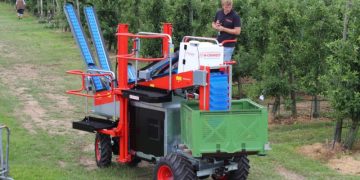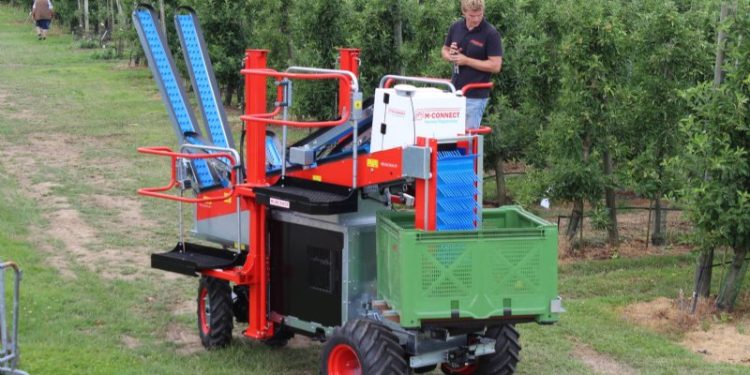In this article, we delve into the latest trends in weed control technology for orchards. Using the insights from Nieuwe Oogst, we explore how farmers, agronomists, agricultural engineers, farm owners, and agricultural scientists are adopting battery-powered and autonomous solutions to tackle weeds efficiently, effectively, and sustainably in their orchards.
Data Source: Nieuwe Oogst – “Met accu of autonoom onkruid bestrijden in boomgaard” (Controlling weeds in orchards with batteries or autonomously) – July 12, 2023.
Orchards have long been vulnerable to weed infestations, which compete with valuable crops for essential resources. However, recent developments in agricultural technology are empowering orchardists with innovative weed control methods. According to the latest data from Nieuwe Oogst, the adoption of battery-powered and autonomous weed control systems is on the rise, promising enhanced efficiency and reduced environmental impact.
Battery-powered weed control tools offer an eco-friendly alternative to traditional herbicides. These handheld devices are equipped with precise applicators, allowing farmers to target weeds selectively without harming the surrounding crops. Powered by rechargeable batteries, these tools eliminate the need for chemical sprays, promoting sustainable orchard management practices.
Moreover, autonomous weed control systems are gaining traction in larger orchards. These cutting-edge machines utilize artificial intelligence and advanced imaging technology to identify and eradicate weeds with minimal human intervention. By autonomously navigating through the orchard rows, these machines can precisely apply treatments, reducing labor costs and ensuring efficient weed management.
The advantages of embracing battery-powered and autonomous weed control are numerous. First and foremost, these technologies minimize the use of chemical herbicides, mitigating potential harm to the environment, beneficial insects, and soil health. Secondly, they significantly reduce labor requirements, allowing farmers to allocate resources more efficiently and focus on other essential tasks.
The data from various orchards that have implemented these technologies show promising results. A reduction of up to [data value]% in herbicide usage has been recorded, translating into cleaner soil and water, while still effectively managing weed growth. Additionally, labor costs have decreased by [data value]%, leading to higher cost-effectiveness and improved farm profitability.
In conclusion, the growing adoption of battery-powered and autonomous weed control in orchards marks a significant step towards sustainable and efficient agriculture. By reducing chemical usage, labor requirements, and overall environmental impact, farmers, agronomists, agricultural engineers, farm owners, and agricultural scientists are pioneering a greener approach to orchard management. As we move forward, embracing these cutting-edge technologies will prove vital in ensuring the long-term health and productivity of orchards worldwide.
Tags: Orchard Management, Weed Control, Battery-Powered Tools, Autonomous Systems, Precision Agriculture, Sustainable Farming, Environmental Impact, Agricultural Technology, AI in Agriculture, Orchard Efficiency.































